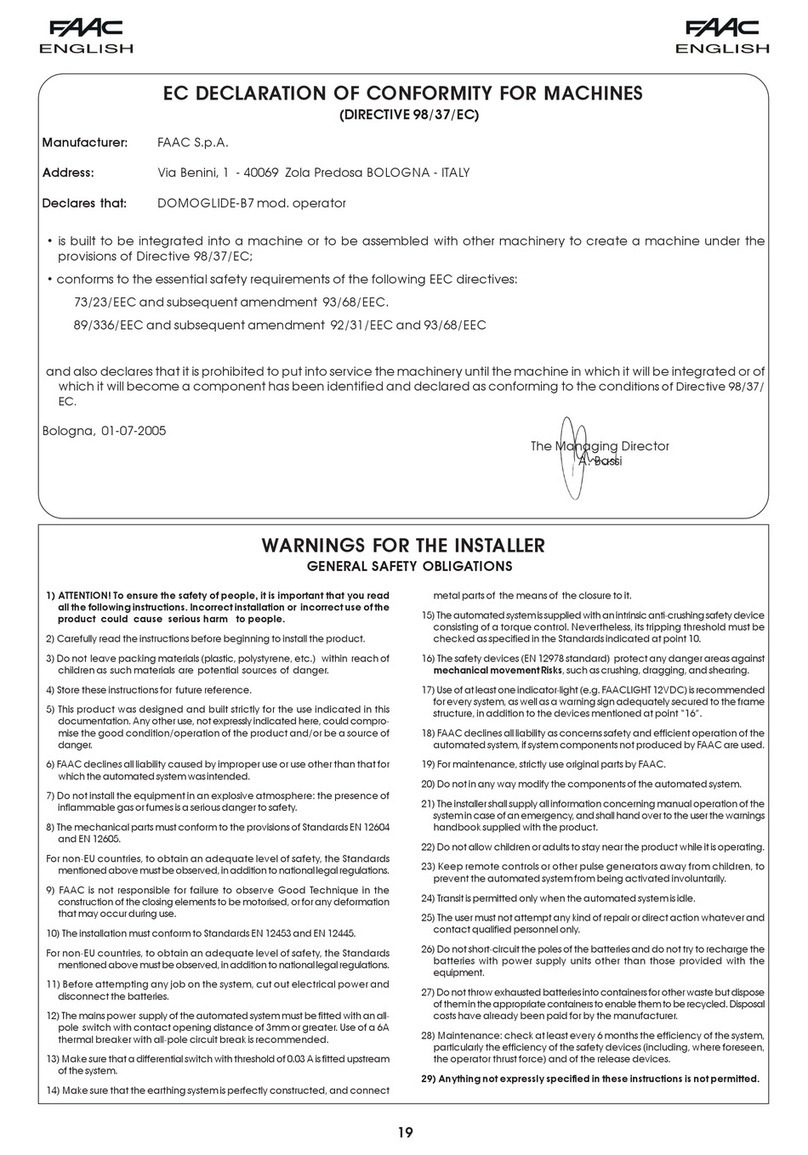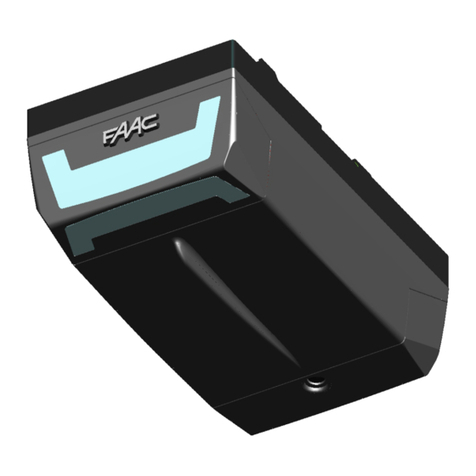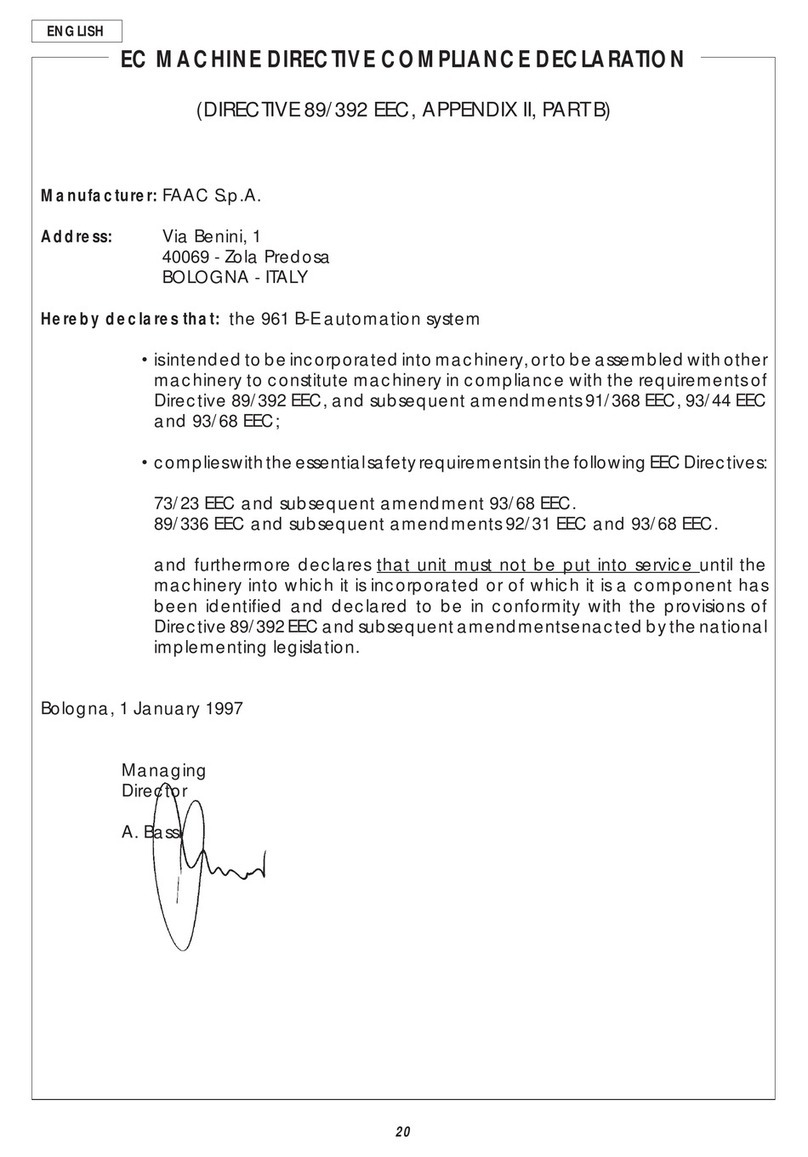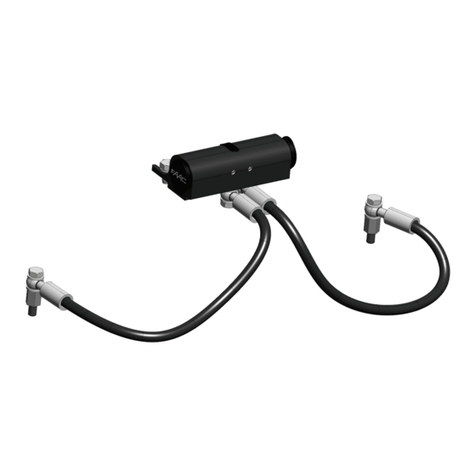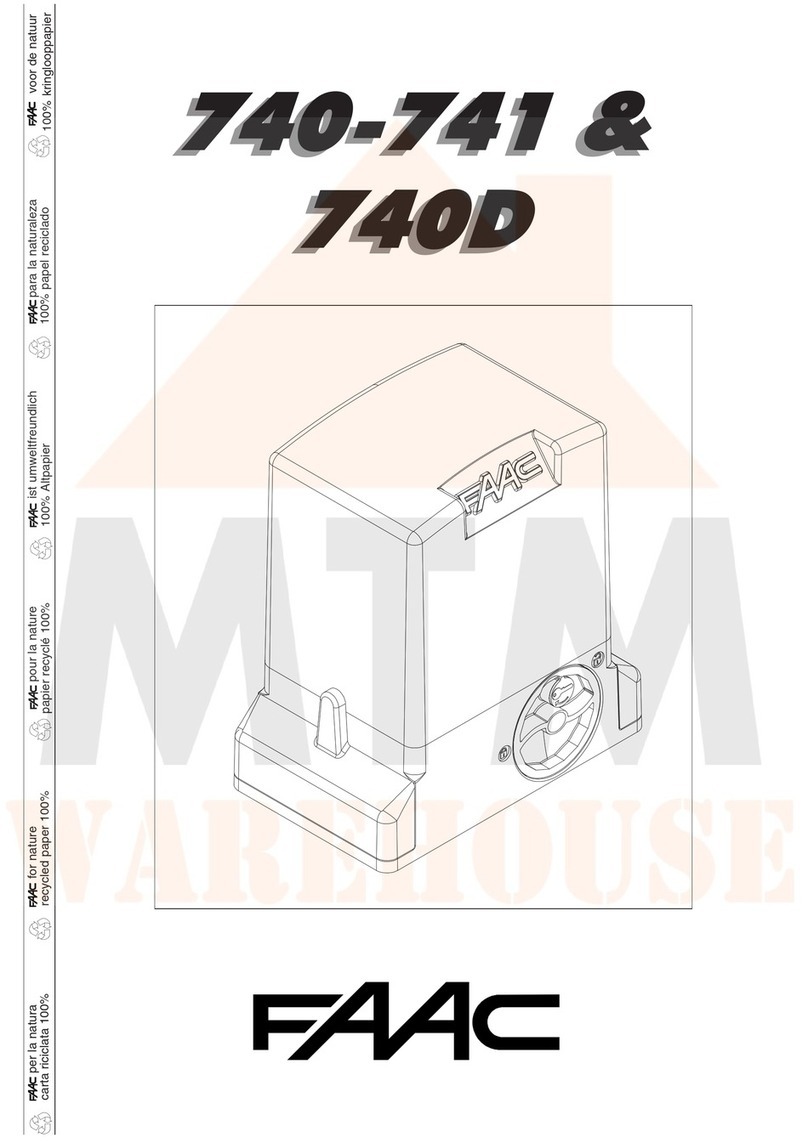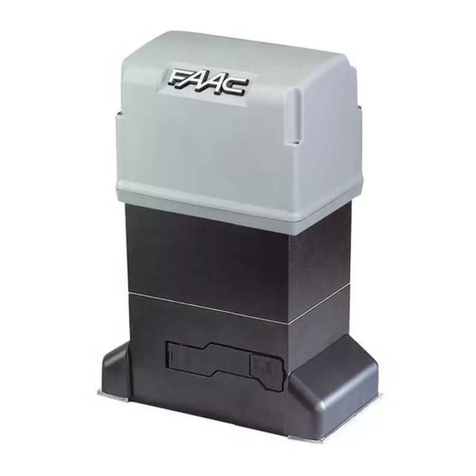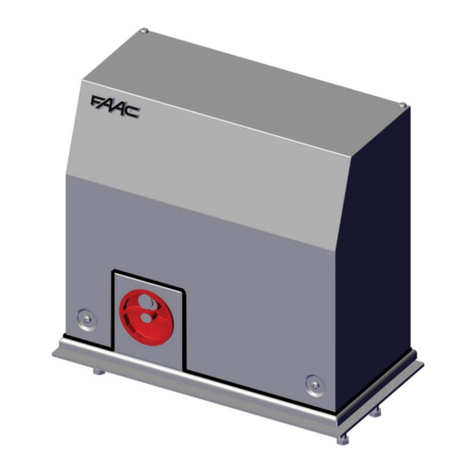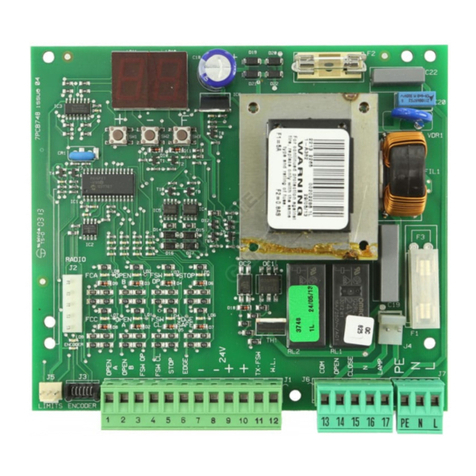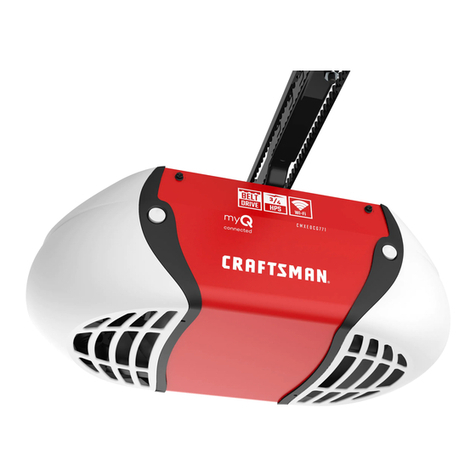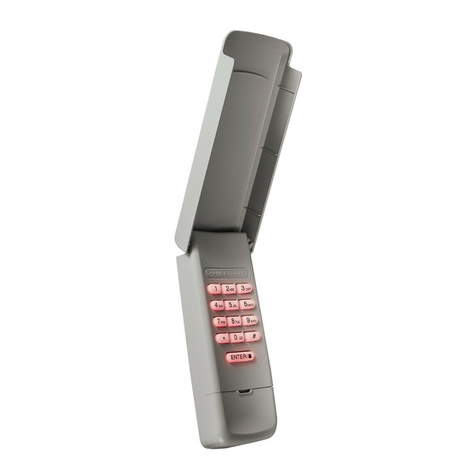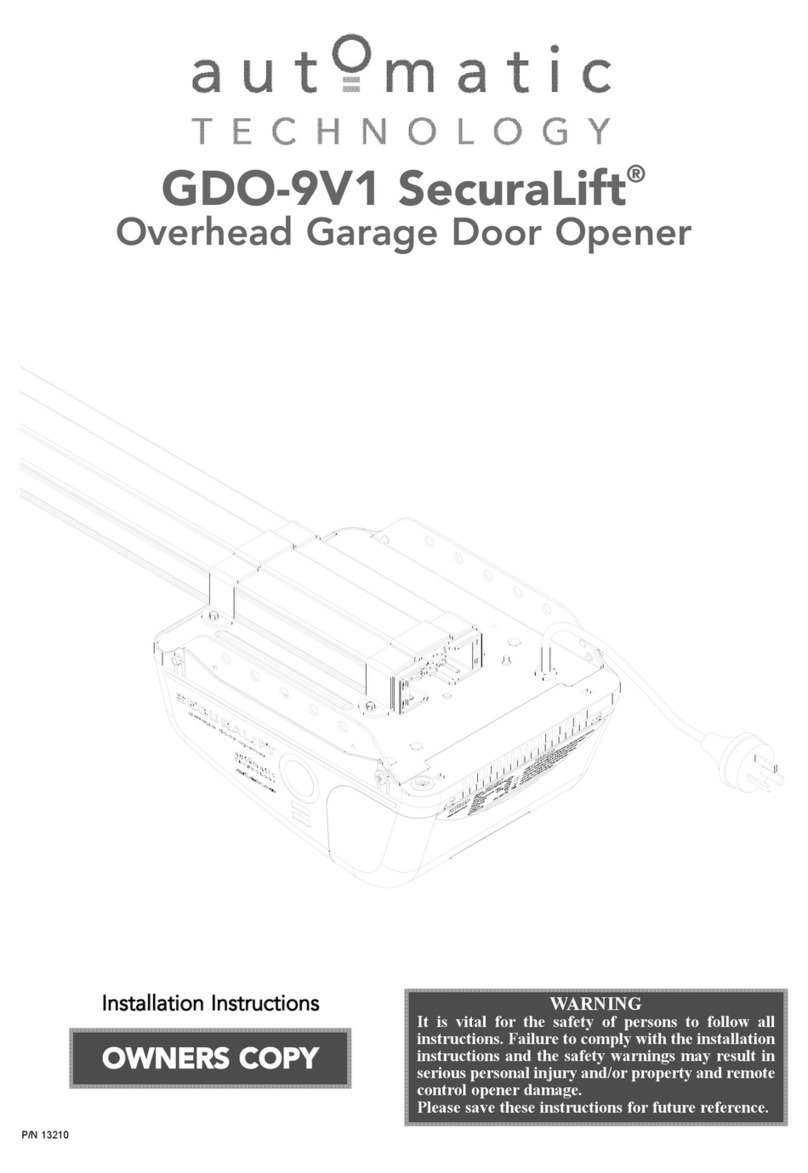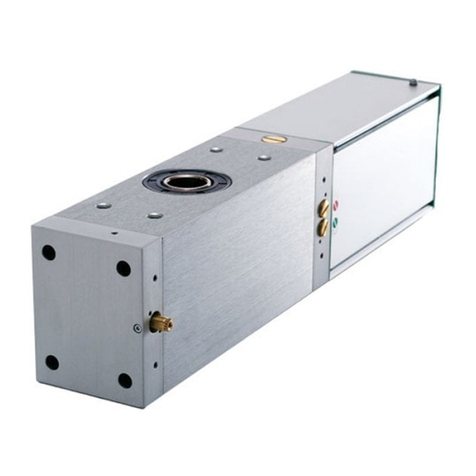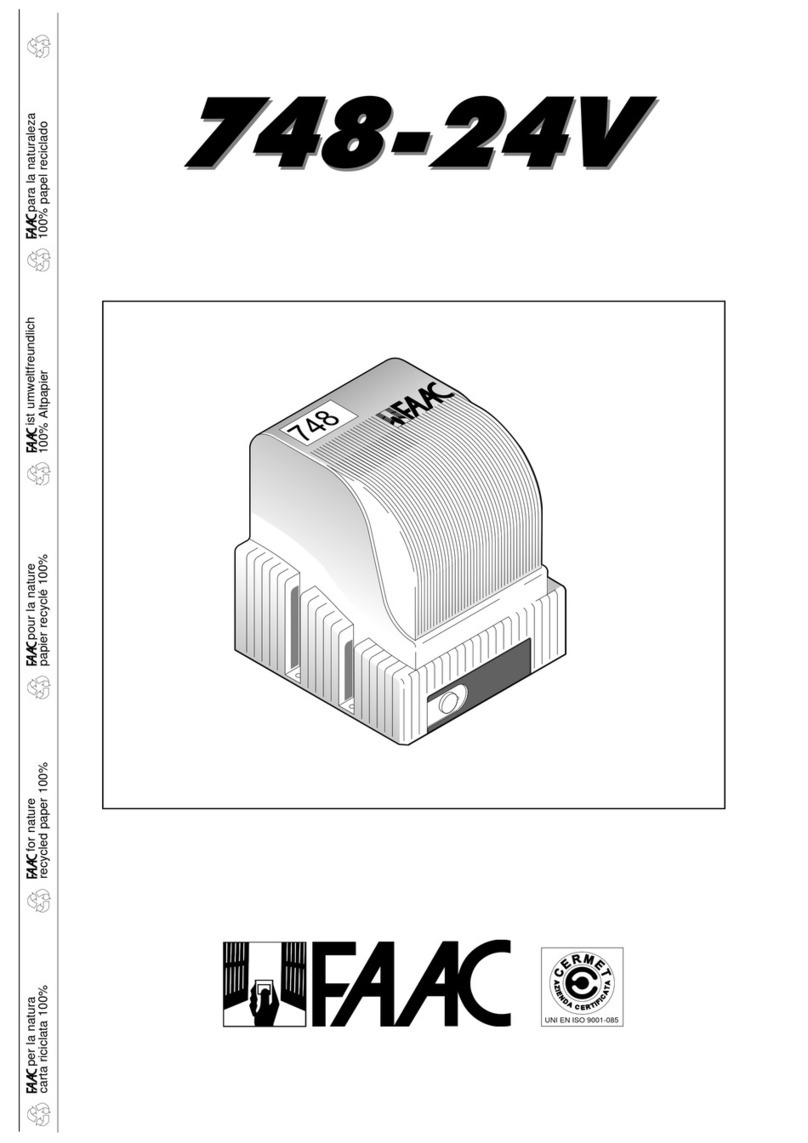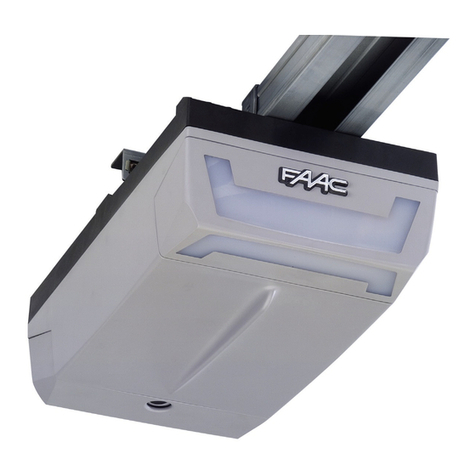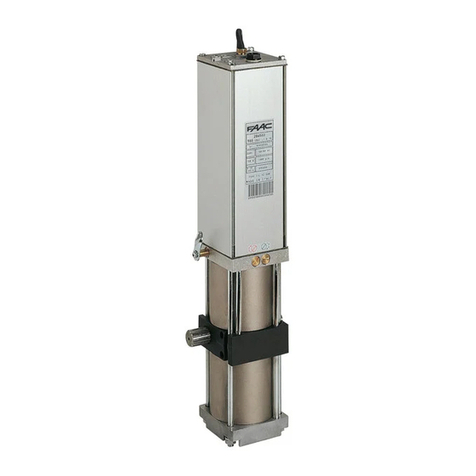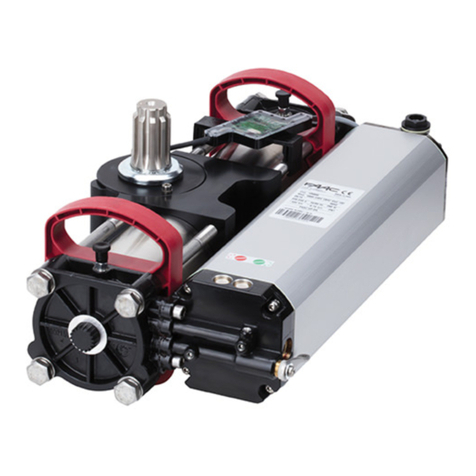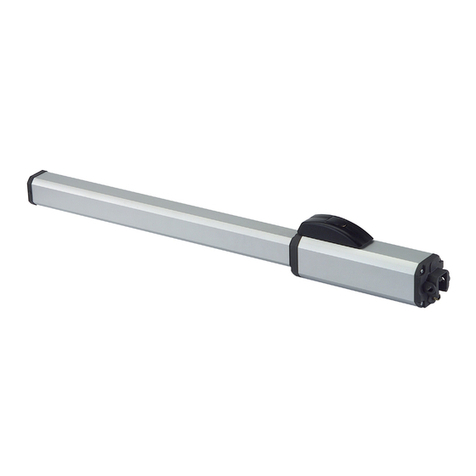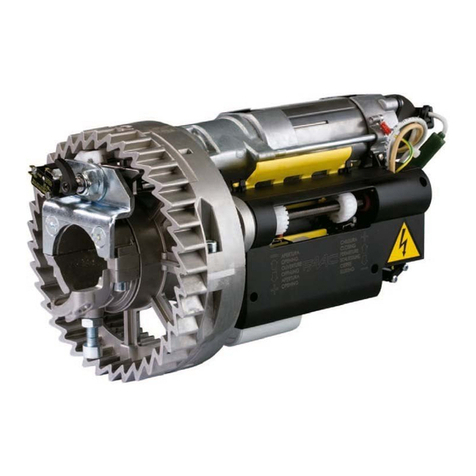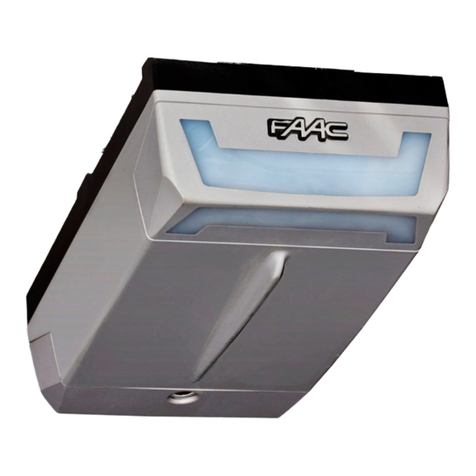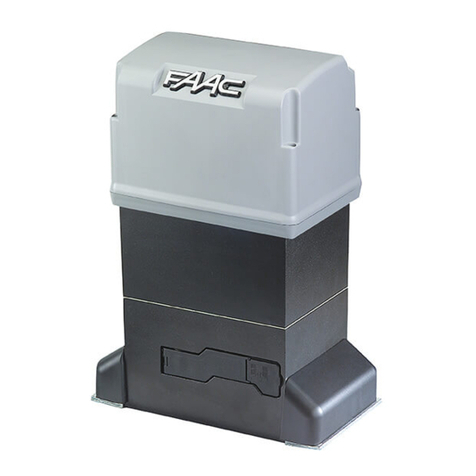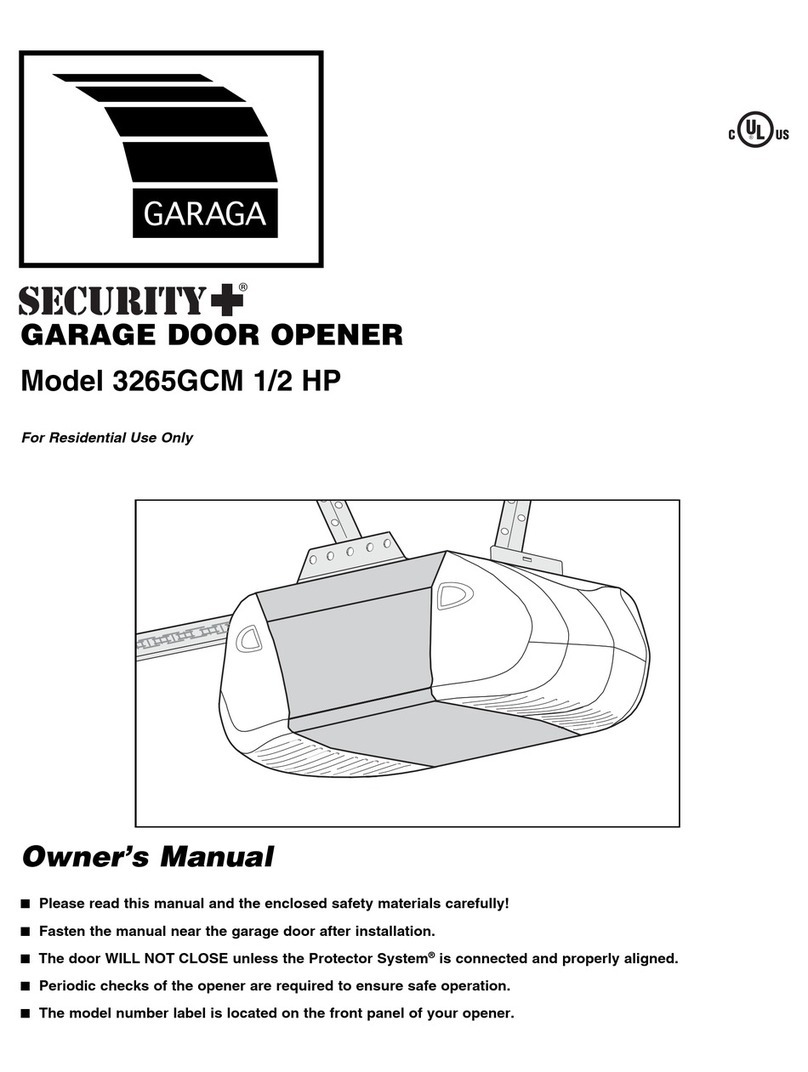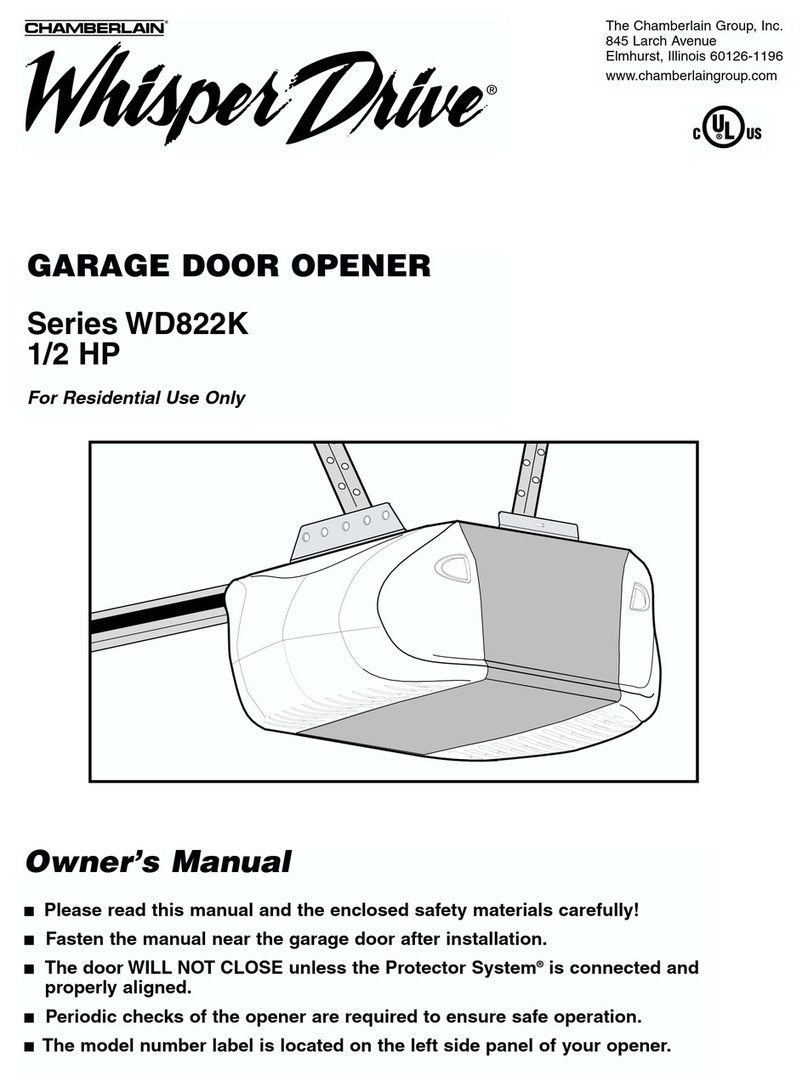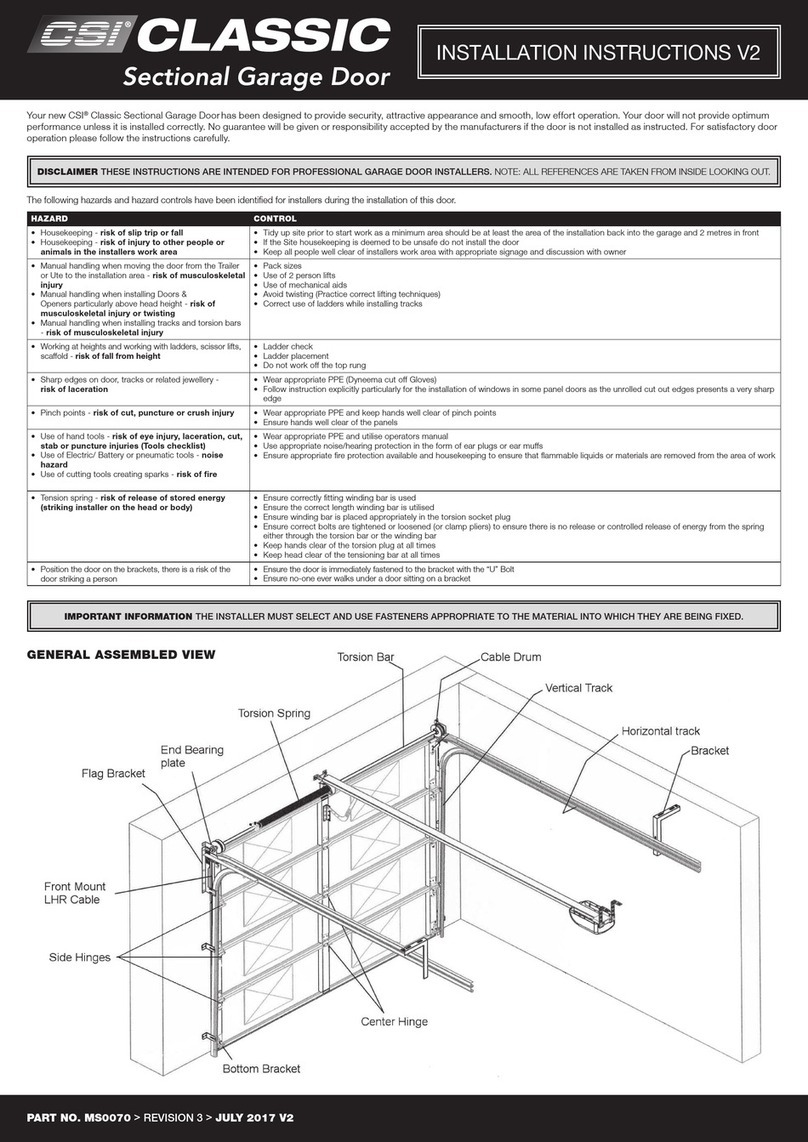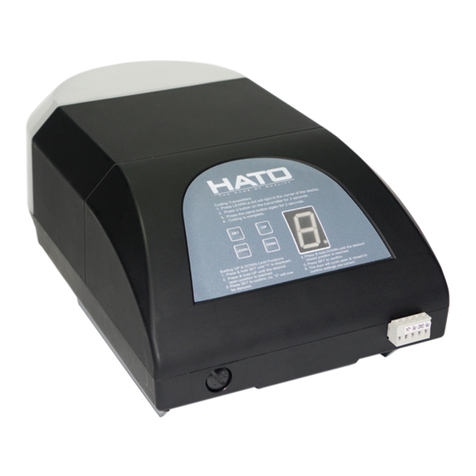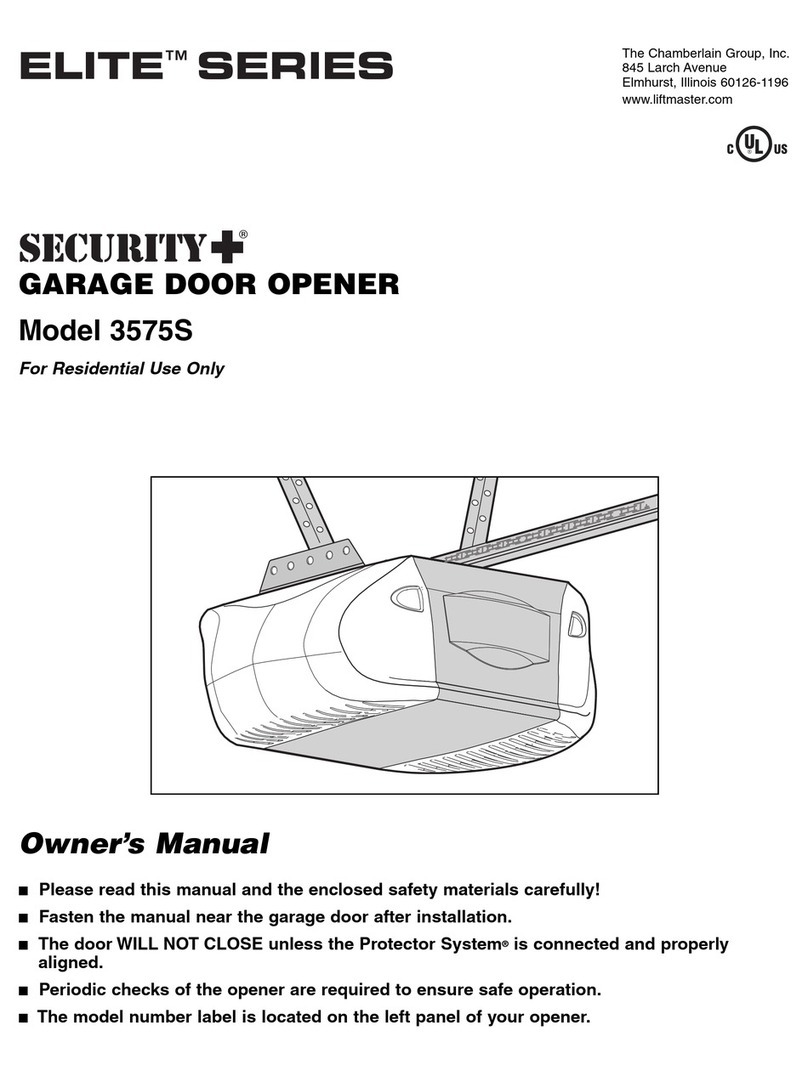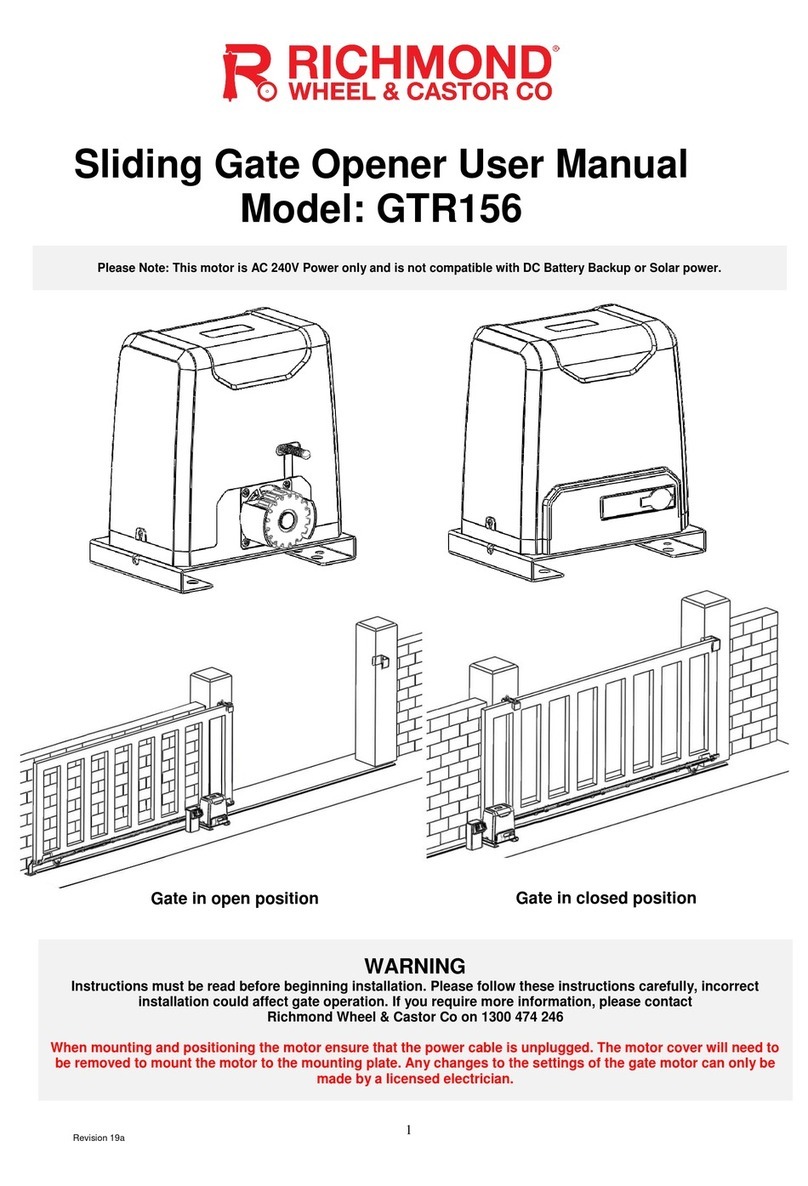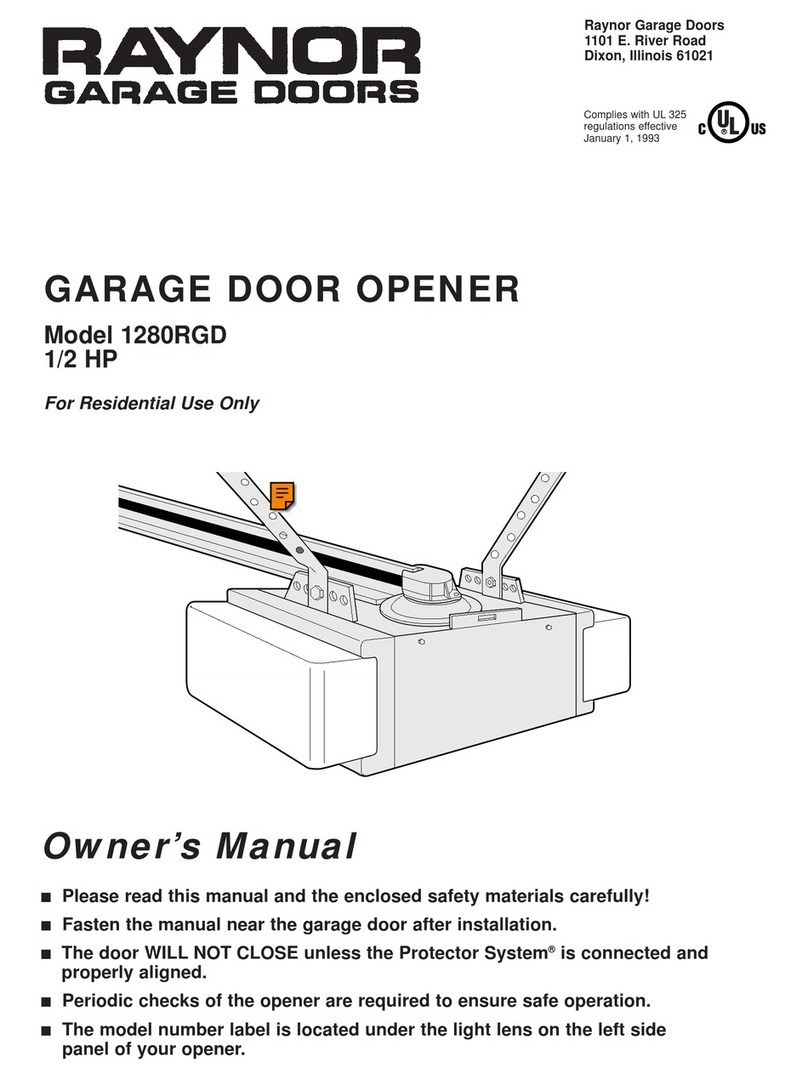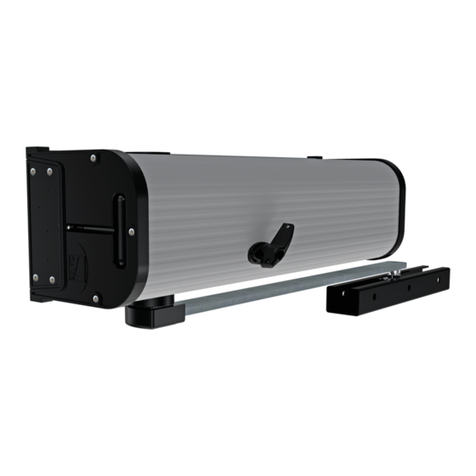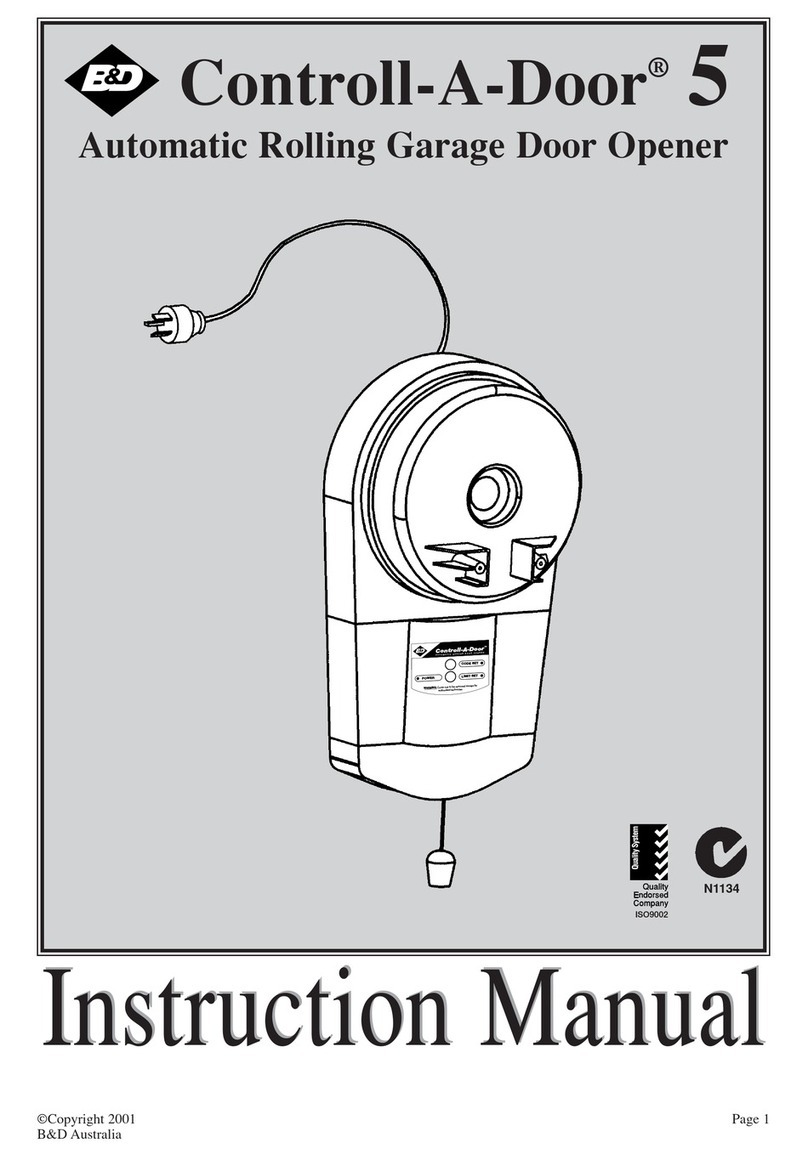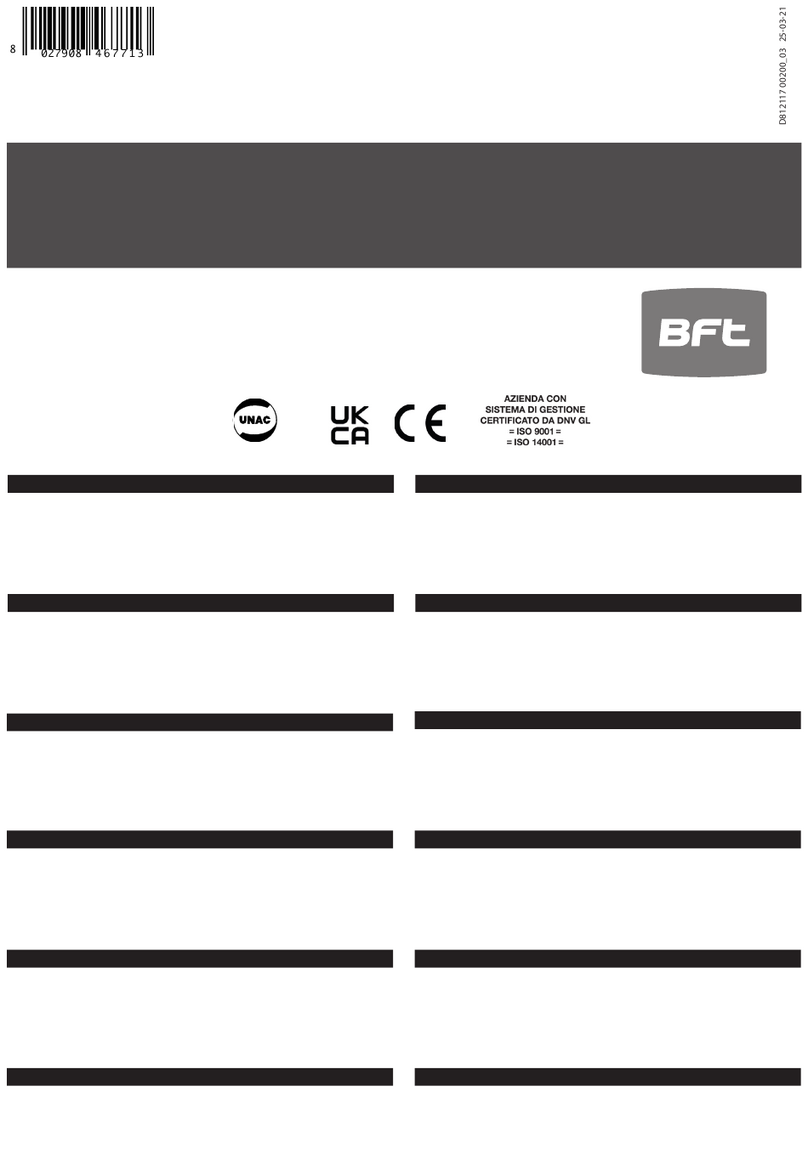
9
ENGLISH
During these 5 seconds, in order to decrease the load on the
release system, you can send OPEN pulses (Fig. 51 ref.) within
2 seconds from each other to move back the carriage. A pulse
corresponds to a 5 millimetre stroke.
N.B.: The moving back of the carriage can only be seen during
normal operation of the automated system.
MANUAL SETTING OF THE STOP POINT ON GROUND (in learning
mode)
During the learning stage, the operator searches for the stop
point on ground using the max. force that can be applied.
To avoid excessive stress, you can determine the stop point
manually: when the automated system performs the closing
movement, send an OPEN command as soon as the stop point
has been reached. If the stop commands at the first and at the
second closing movement are incongruent, the automated
system will signal the fault status and the learning cycle must
be repeated.
During the normal operation, the automated system searches in
any case for the stop point, but it only exercises the necessary
force to move the door.
The sensitivity of the anti-crushing device depends on
programming (anti-crushing sensitivity, manual force
adjustment) and on the mechanical characteristics of
the door. At the end of installation and programming,
always perform the checks according to the standards
mentioned in the chapter “WARNINGS FOR THE INSTALLER”
of these instructions.
At the end of the learning cycle, perform a complete
cycle of the automated system in order to acquire the
correct closing stop point. If, at the end of this cycle,
the automated system reopens the door, command a
re-closure.
11.3 Pre-flashing
You can activate and disable the pre-flashing function (following
to an OPEN command, the unit activates the flashing lamp for 5
seconds before starting the movement) acting as follows:
1) Press the SET UP push-button and hold it down.
2) After approx. 3 seconds press the OPEN push-button. If the
SET UP LED lights on, it means that the pre-flashing is active; if,
on the contrary, it remains off, it means that the pre-flashing
is disabled.
3) Release both push-buttons.
If the learning procedure has ended successfully, the SET UP LED
(Fig. 43 ref. ) stops flashing and stays ON for 5 seconds.
During these 5 seconds, in order to decrease the load on the
release system, you can send OPEN pulses (Fig. 43 ref. ) within
2 seconds from each other in order to move the carriage back.
A pulse corresponds to a 5 millimetre stroke.
N.B.: The moving back of the carriage can only be seen during
the normal operation of the automated system.
AUTOMATIC LEARNING WITH LOGIC “A” (AUTOMATIC)
NOTA: we recommend you to perform this
learning at LOW speed.
(dip-switch 4= ON)
Hold down the SET UP push-button until the SET UP LED lights
on (approx.5 seconds). (Fig. 44 ref. ) On release of the
push-button, the SET UP LED starts flashing. (Fig. 44 ref. )
1) After 4 seconds the operator automatically performs the
decelerated closing movement until it detects the stop
point. (Fig. 45 ref. )
2) The operator performs the door opening. Wait for the door to
reach the stop point or send an OPEN command (Fig. 46 ref.
) in the position where you want to stop the movement.
3) The operator closes the door again.
4) Wait for the door to reach the stop point and for the operator
to stop.
If the learning procedure has ended successfully, the SET UP LED
(Fig. 47 ref. ) stops flashing and stays on for 5 seconds.
During these 5 seconds, in order to decrease the load on the
release system, you can send OPEN pulses (Fig. 47 ref. ) within
2 seconds from each other in order to move back the carriage.
A pulse corresponds to a 5 millimetre stroke.
N.B.: The moving back of the carriage can only be seen during
the normal operation of the automated system.
The deceleration points will be defined by the control unit.
The pause time is fix (3 minutes).
MANUAL LEARNING WITH LOGIC “A” (AUTOMATIC)
Hold down the SET UP push-button until the SET UP LED lights
on (approx. 5 seconds). (Fig. 48 ref. ) On release of the
push-button, the SET UP LED starts flashing. (Fig. 48 ref. )
Start the following procedure within 4 seconds (otherwise the
operator performs the automatic SET UP).
1) Send the 1st OPEN command: the operator performs a
decelerated closing movement until it detects the stop
point. (Fig. 49 ref. and Fig. 50 ref. )
2) Send the 2nd OPEN command: the operator starts with an
opening movement. (Fig. 49 ref. and Fig. 50 ref. )
3) Send the 3rd OPEN command to define the point where you
want to start the deceleration. (Fig. 49 ref. and Fig. 50 ref.
)
4) Send the 4th OPEN command to define the opening stop
point, or wait for the automated system to detect the stop
point. Following to the stop, the count of the time starts, during
which the automated system stays open. This corresponds to
the pause time that will be observed during normal operation
(max. 3 minutes). (Fig. 49 ref. and Fig. 50 ref. )
5) Send the 5th OPEN command: the pause time count stops
and the closing movement begins. (Fig. 49 ref. and Fig.
50 ref. )
6) Send the 6th OPEN command to define the point where you
want to start the deceleration. (Fig. 49 ref. and Fig. 50 ref.
©)
7) Wait for the door to reach the stop point and for the operator
to stop. (Fig. 50 ref. )
If the learning procedure has ended successfully, the SET UP LED
(Fig. 51 ref. ) stops flashing and stays on for 5 seconds.
